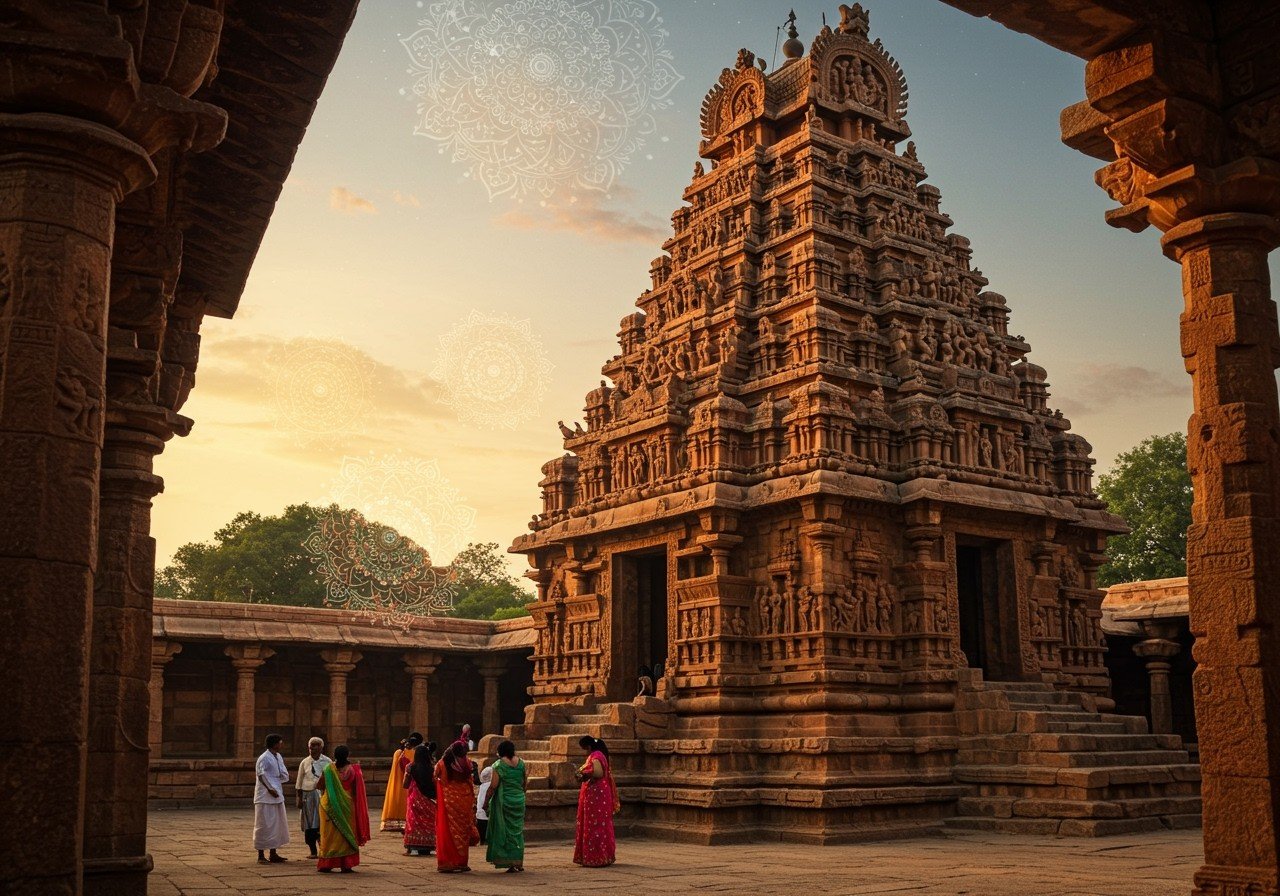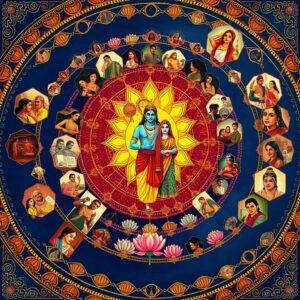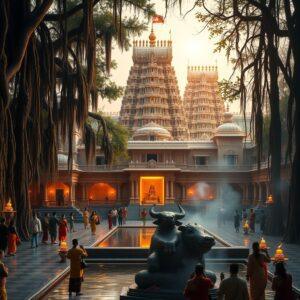
The Mallikarjuna Temple at Pattadakal stands as a testament to the architectural brilliance and rich cultural heritage of ancient India. As a UNESCO World Heritage Site nestled within the Pattadakal temple complex in Karnataka, it beautifully showcases a harmonious blend of Dravidian (Southern) and Nagara (Northern) architectural styles. This article delves into the intricate details and historical significance of the Mallikarjuna Temple, offering a captivating exploration for those deeply rooted in culture and with a profound appreciation for tradition and heritage.
Historical Context and Significance
Constructed in the 8th century during the reign of the Chalukya dynasty, the Mallikarjuna Temple symbolizes the dynasty’s deep devotion to Hindu deities and their remarkable architectural ingenuity. Commissioned by Queen Trailokyamahadevi to commemorate her husband’s victory over the Pallavas, the temple’s historical context sheds light on the political dynamics of the era and the significant role women played in commissioning monumental architecture. This victory marked a turning point in the region’s power dynamics, and the temple stands as a lasting symbol of that historical moment.
Architectural Design and Layout
The Mallikarjuna Temple exemplifies the Vesara style, a unique fusion of Dravidian and Nagara architectural elements. Built on an elevated platform, the temple features a sanctum (garbhagriha), an antechamber (antarala), and a pillared hall (mandapa). The intricate carvings adorning the pillars and walls depict scenes from Hindu mythology, showcasing the exceptional craftsmanship of the Chalukyan artisans. The shikhara (tower) displays the distinctive Dravidian style, characterized by a square base and curvilinear outlines, adding to the temple’s visual appeal.
Sculptural Highlights
The temple walls are embellished with exquisite sculptures that narrate stories from the Ramayana, Mahabharata, and various Puranas. These narratives, carved in stone, bring the epics to life and offer a glimpse into the rich tapestry of Hindu mythology. Noteworthy sculptures include the depiction of Lord Shiva as Nataraja (the cosmic dancer) and various forms of Goddess Parvati. Beyond their decorative purpose, these sculptures convey profound religious and moral teachings. The meticulous workmanship and expressive forms reflect the artistic excellence that flourished during that period. The sculptures serve as a visual testament to the skill and devotion of the artisans who created them.
Religious and Cultural Relevance
The Mallikarjuna Temple remains an active site of worship and pilgrimage, drawing devotees from all corners of the country. The temple’s continued importance in religious practices highlights its enduring spiritual significance. Key aspects include the annual Maha Shivaratri festival, along with various rituals and cultural events. These activities play a vital role in preserving the cultural heritage and religious practices of the region, reinforcing the temple’s significance within the socio-cultural fabric of the local community. They provide a tangible link to the past and ensure the continuity of ancient traditions.
Conservation Efforts
Preserving the Mallikarjuna Temple is paramount to safeguarding India’s architectural and cultural heritage. The Archaeological Survey of India (ASI) undertakes various conservation efforts, including regular maintenance, restoration of damaged sculptures, and measures to protect the site from environmental and human-induced threats. The active involvement of local communities in these conservation initiatives underscores the shared responsibility towards heritage preservation. These collaborative efforts ensure the temple’s legacy endures for generations to come.
Poojn.in: Enhancing Your Spiritual Journey
A visit to the Mallikarjuna Temple is a deeply enriching experience, and Poojn.in is here to enhance your spiritual journey. As India’s leading provider of cultural and religious goods, we offer a wide selection of items to make your temple visit even more meaningful.
- Complete Pooja Kits: Prepare for your visit with our ready-to-use kits containing all the essentials for temple offerings. These kits ensure you have everything you need for a fulfilling and respectful worship experience.
- Traditional Brass Utensils: Elevate your rituals with our pure brass diyas and kalash, crafted according to traditional standards. These utensils add an element of authenticity and reverence to your offerings.
- Pure Cotton Vastrams: Adorn yourself or offer traditional temple-wear and offering cloths made from pure cotton. These garments symbolize purity and respect, enhancing the spiritual significance of your visit.
Explore our extensive collection of Pooja Samagri and Holy Utensils to find everything you need for a truly immersive temple experience.
Conclusion
A visit to the Mallikarjuna Temple at Pattadakal transcends a mere architectural exploration; it’s an immersive journey into the rich cultural and historical tapestry of ancient India. This magnificent site, with its intricate carvings and majestic design, stands as a tribute to the Chalukya dynasty’s devotion and artistic prowess. By exploring this temple, we connect with our heritage and honor the traditions that continue to shape our cultural identity. Whether you seek spiritual enlightenment, historical knowledge, or simply the beauty of ancient craftsmanship, the Mallikarjuna Temple offers a rewarding and enriching experience.


